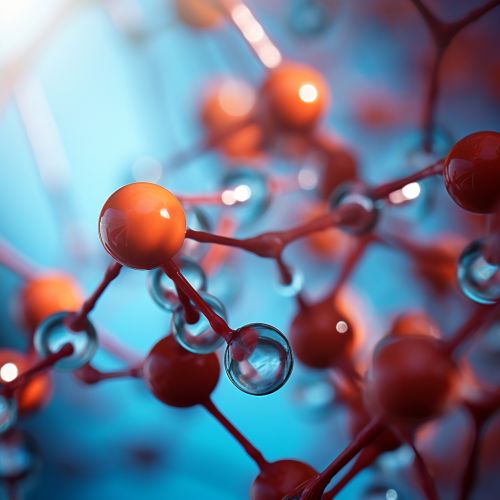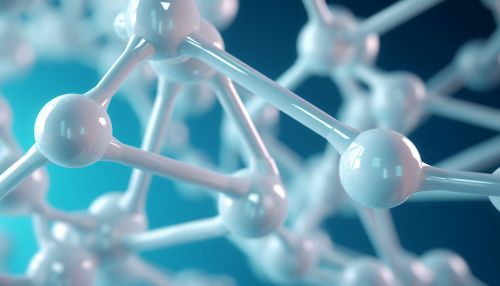Adenosine triphosphate
Overview
Adenosine triphosphate (ATP) is a complex organic compound that provides energy to drive many processes in living cells, e.g. muscle contraction, nerve impulse propagation, and chemical synthesis. Found in all forms of life, ATP is often referred to as the "molecular unit of currency" of intracellular energy transfer. When consumed in metabolic processes, it converts either to adenosine diphosphate (ADP) or to adenosine monophosphate (AMP). Other processes regenerate ATP so that the human body recycles its own body weight equivalent in ATP each day.
Structure
ATP consists of an adenosine molecule and three inorganic phosphate groups (triphosphate). The structure of the adenine and ribose remains constant, whereas the phosphate group may be single, double, or triple. The phosphate tail of ATP is the actual power source which the cell taps.


Synthesis
ATP is synthesized from ADP and inorganic phosphate (Pi) by the following three main types of mechanisms:
1. Substrate-level phosphorylation, which occurs in the cytoplasm during glycolysis. 2. Oxidative phosphorylation, which occurs in the mitochondria. 3. Photophosphorylation, which occurs in the chloroplasts of plants.
Function
ATP is involved in various cellular processes. It plays a critical role in the transport of macromolecules such as proteins and lipids into and out of the cell. The energy provided by the hydrolysis of ATP is used to move these molecules against their concentration gradients.
Role in Biochemical Reactions
ATP plays a crucial role in a variety of biochemical reactions. It is involved in signal transduction pathways, DNA and RNA synthesis, and is a substrate for kinases.
ATP Cycle
The ATP cycle is the process by which ATP is broken down into ADP and inorganic phosphate, releasing energy for cellular processes, and then reassembled to ATP as part of cellular respiration.
